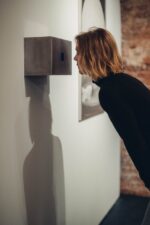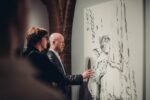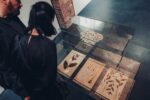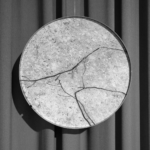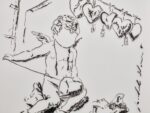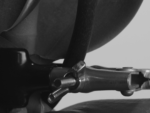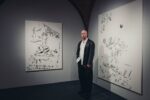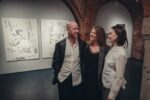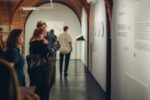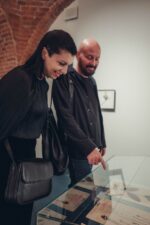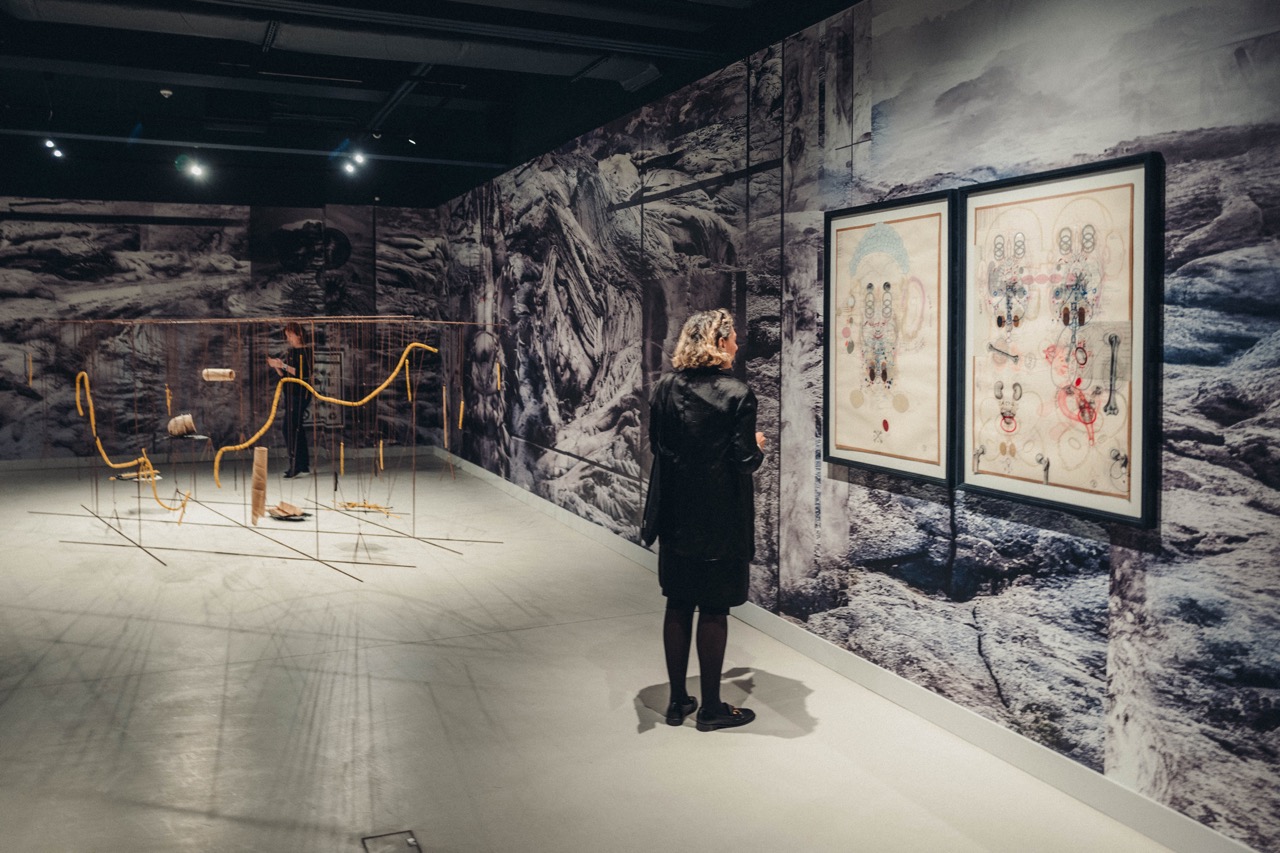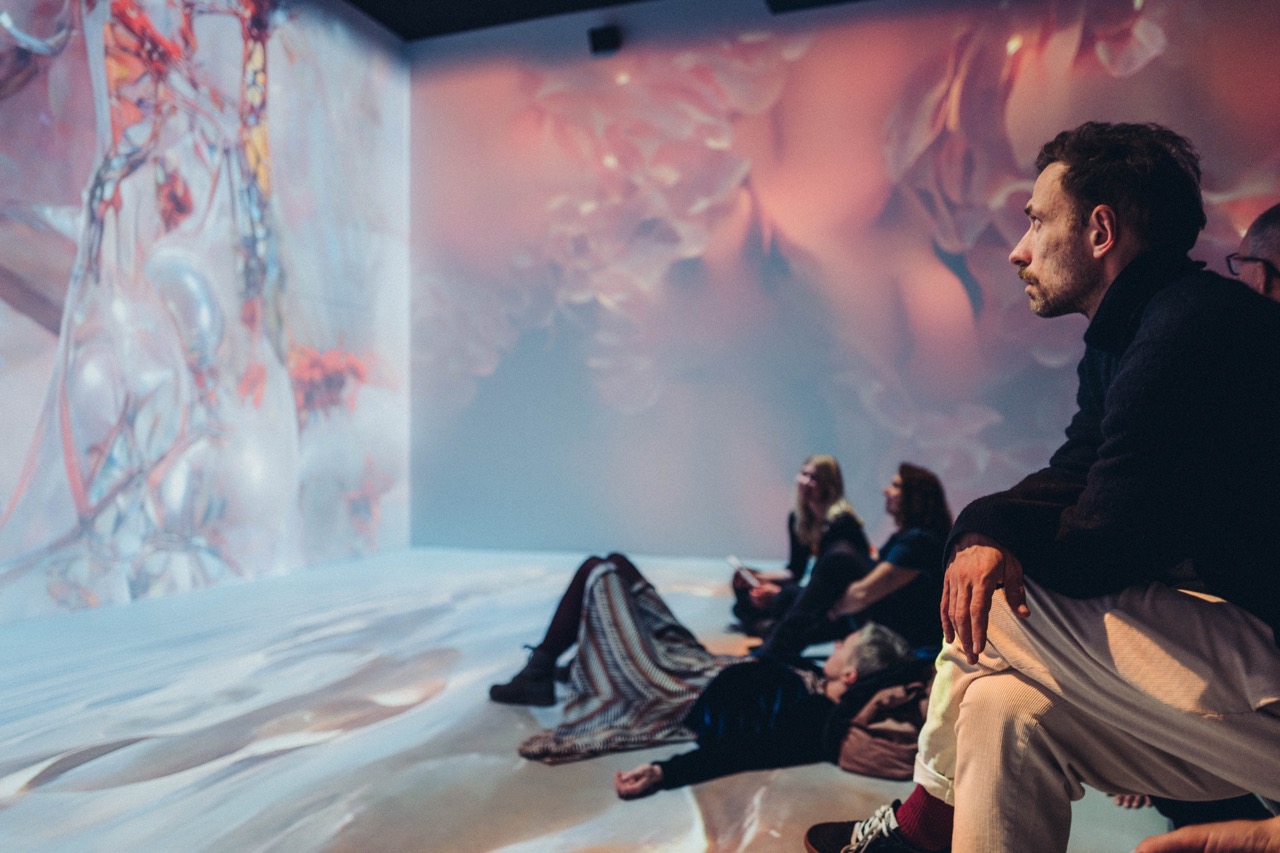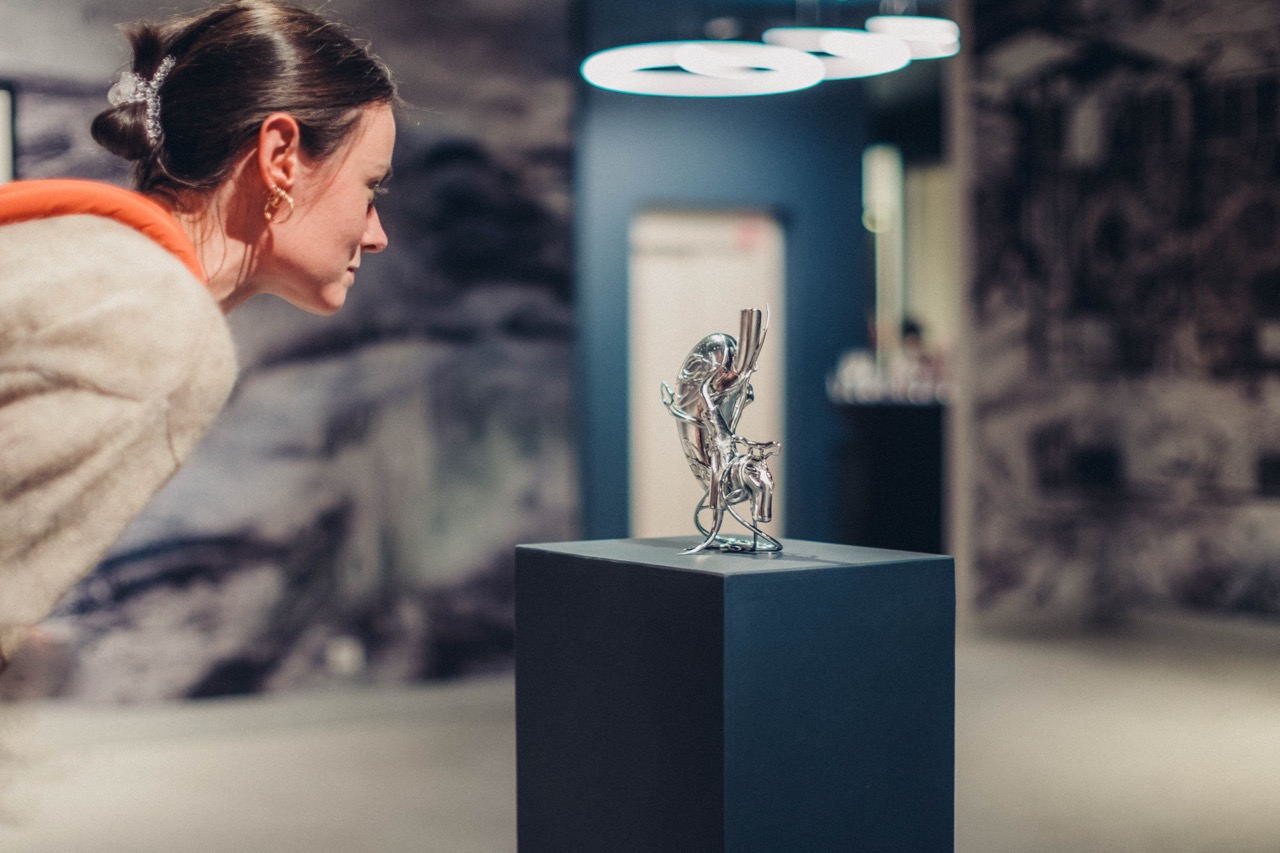Program
KAF
March 14 – June 1, 2025
What remains when we strip love of its romantic narrative? What if we begin to perceive it as a chemical process, a biological determination, or a struggle for control? The works of Mastalerz and Hübbe intertwine in this narrative, revealing that love has never been free from power, influence, and formation.
Artists: Conrad Hübbe, Agnieszka Mastalerz
Curator: Katarzyna Piskorz
Opening Hours:
Monday, Wednesday, Thursday: 12:00 PM – 6:00 PM
Friday – Sunday: 11:00 AM – 8:00 PM
Tuesday: Closed
Admission: Tickets priced at 35 PLN (regular), 25 PLN (concession)
Love begins with impact. Sometimes quite literally — as in the case of hermaphroditic snails. Before mating, they dance, touching each other with their tentacles, striking near the mouth opening, where their reproductive organs are located. Courtship lasts for hours until, finally, a blow is struck. A calcareous structure, known as a love dart, pierces the soft tissue of the chosen mate, increasing the chances of transmitting one’s genetic material. Only wounded bodies can be fertilized. Biology knows no euphemisms — love is domination and a fight for survival.
In Greek mythology, Eros, and in Roman mythology, Cupid, wielded similar weapons. Their arrows dictated emotions, pierced free will, and altered fate. Eros — the same figure whose name became synonymous with desire — possessed two arrows: one that evoked love and brought relief, and another that destroyed life and condemned to eternal damnation. On Conrad Hübbe’s canvases appears a deity embodying love and desire — usually for what one does not possess. The artist draws upon historically rooted motifs, exploring how images serve as carriers of meaning, how they can break free from their original context, transform, and connect us to the past. Carefree Cupids, depicted as children, control emotions — playing with hearts, using them as tennis balls, or stitching together those they have condemned to breakage.Hübbe employs imagery drawn from painting traditions, analyzing them through a sculptural lens. He digitally creates drawings, which are then projected onto the canvas. On a pre-primed and white-painted surface, he applies monochromatic outlines using aerosol paint. In his works, love is not a choice but a fate imposed by an unpredictable higher force. Emotions are seized, woven into a system. Here, love appears as something more than an emotional state — it is a mechanism that one can be drawn into unconsciously.
In Agnieszka Mastalerz’s works, romantic ecstasy also intertwines with control. The artist analyzes the phenomenon of aestheticizing tools of domination. In the “Nodes” series, consisting of video and photography, the motif of orchids reappears. These parasitic plants have been known since antiquity — used in love potions, their roots considered an aphrodisiac placed in lovers’ clothing to influence their emotions. Mastalerz created her works in a production hall in Stężyca, where ideal plants are mass-produced for sale. She focused on the commercial aspect — where one species’ body becomes a space for another’s aesthetic realization. Each specimen undergoes unification — first by machines, then by people, primarily women, who trim roots and leaves that deviate from the perfect model. Touching plants, shaping them, carries an artistic, sculptural gesture, yet it is simultaneously an act of violence. Eliminating elements that do not conform to aesthetic standards satisfies the need for beauty. In this way, a living being is reduced to a decorative function, a substitute for an artwork. The final form — perfect, pure, repeatable — resembles an emotion filtered through social expectations.
Mastalerz often assumes the role of an observer. In the video “Play Down,” she captured the moment of semen collection from a young stallion for artificial insemination. The horse — a symbol of strength and untamed energy — in this process becomes an object of control. Semen, instead of being the fruit of ecstasy, functions as a commodity, subjected to regulations. The impact here is precise, deliberate, determined — no longer romantic but functional. Love becomes a sterile process, confined to laboratories, test tubes, and sperm banks. The storage of an animal’s genetic material is documented in the photograph “Vault I,” while a photomural features an image from a castration procedure. The artist captures moments where a body deprived of autonomy is subjected to supervision and programmed for function. The physical act becomes subordinate and conditioned.
Love is not a neutral state — it is a process, an act of persuasion, manipulation, and ritual that we attempt to control. It is also a meeting of bodies, a moment of life transmission, and the traces that remain within us. The works of Mastalerz and Hübbe intertwine these threads, revealing how emotional states are subject to programming mechanisms. In the realms of art, mythology, biology, and pop culture, love has never been merely a feeling — it is a mechanism that operates even when we pretend to be free from it.
Mastalerz and Hübbe explore processes of formation and deformation as gestures enforcing change. An impact can be accidental or intentional, painful or ecstatic, violent or anticipated. It is an act of penetration, infiltration, transformation, and connection. A force whose effects cannot be predicted — yet which changes the course of events and never leaves us as we were before.


